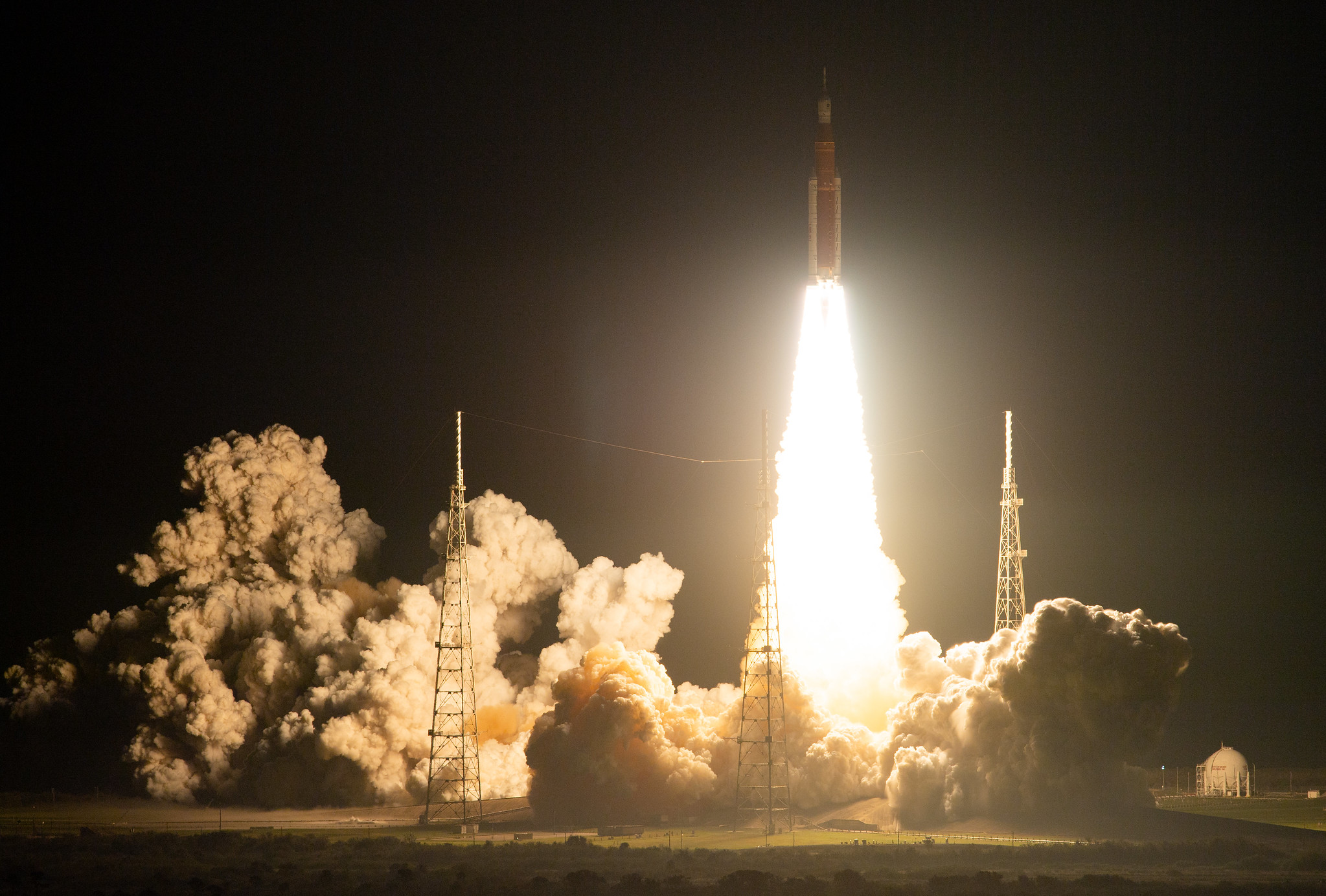
After acing its first-ever mission, NASA's Space Launch System (SLS) megarocket appears ready to take the next big step — launching astronauts.
The debut SLS flight, on Nov. 16, kicked off NASA's 25-day-long Artemis 1 mission, which sent an uncrewed Orion capsule to lunar orbit and back. It also made the SLS the most powerful rocket ever to launch successfully, a title it wrested from NASA's iconic Saturn V.
An initial assessment of SLS' Artemis 1 performance, which NASA released on Nov. 30, gave the rocket high marks, finding that it performed as expected in all areas. Mission team members have now had more time to crunch the numbers, and the reviews continue to be rave, suggesting that no big changes will be required ahead of the first crewed SLS launch.
"Building off the assessment conducted shortly after launch, the preliminary post-flight data indicates that all SLS systems performed exceptionally and that the designs are ready to support a crewed flight on Artemis 2," NASA officials wrote in an update on Jan. 27. "The post-flight analysis team will continue reviewing data and conducting final reportings."
Artemis 2 will send NASA astronauts on a roughly 10-day mission around the moon in 2024, if all goes according to plan.
In photos: Amazing views of NASA's Artemis 1 moon rocket debut
SLS team members analyzed a lot of data to arrive at their most recent conclusions, which, as the above statement makes clear, are not the final word on the rocket's performance and prospects.
Breaking space news, the latest updates on rocket launches, skywatching events and more!
For example, cameras on the ground, on the rocket and in the air collected about 31 terabytes of imagery data about the liftoff, NASA officials said — more than 1.5 times the information represented by the printed material in the U.S. Library of Congress.
"The numerous views of the Artemis 1 rocket, including the solid rocket booster separation and interim cryogenic propulsion stage (ICPS) separation, provided imagery data that helped us assess how SLS performed from liftoff through the ascent and separation events," Beth St. Peter, SLS imagery integration lead, said in the Jan. 27 update.
The ICPS, the upper stage of the SLS, is powered by a single RL-10 engine. The giant rocket's core stage features four RS-25 engines left over from the space shuttle era. Two solid rocket boosters were affixed to the core stage for the Artemis 1 mission, helping the SLS generate a whopping 8.8 million pounds of thrust at liftoff.
All of this hardware performed extremely well on Nov. 16, NASA officials said in the latest update. For example, RS-25 thrust levels were within 0.5% of the expected values, as was the ratio of fuel (liquid hydrogen) to oxidizer (liquid oxygen) in the engines.
In addition, the SLS core stage inserted the ICPS and Orion into an initial orbit that took the duo up to 972.1 miles (1,564.4 kilometers) from Earth and as close as 16 miles (25.7 km).
"The insert was just 2.9 miles [4.7 km] shy of the perfect bullseye target of 975 miles [1,569.1 km] by 16 miles and well within acceptable parameters," NASA officials wrote in the update.
Artemis 1 will be just the beginning for the SLS and Orion, if all goes according to plan. NASA is counting on the hardware to help establish a permanent human presence on and around the moon by the end of the 2020s, a key goal of the agency's Artemis program.
Artemis will rely on other elements as well. For instance, SpaceX's giant Starship vehicle will be the program's first crewed lunar lander, and the Artemis architecture also includes a small moon-orbiting space station called Gateway.
If all goes well with Artemis 2, Artemis 3 will put astronauts down near the lunar south pole in 2025 or thereabouts.
Mike Wall is the author of "Out There" (Grand Central Publishing, 2018; illustrated by Karl Tate), a book about the search for alien life. Follow him on Twitter @michaeldwall. Follow us on Twitter @Spacedotcom or Facebook.
Join our Space Forums to keep talking space on the latest missions, night sky and more! And if you have a news tip, correction or comment, let us know at: community@space.com.

Michael Wall is a Senior Space Writer with Space.com and joined the team in 2010. He primarily covers exoplanets, spaceflight and military space, but has been known to dabble in the space art beat. His book about the search for alien life, "Out There," was published on Nov. 13, 2018. Before becoming a science writer, Michael worked as a herpetologist and wildlife biologist. He has a Ph.D. in evolutionary biology from the University of Sydney, Australia, a bachelor's degree from the University of Arizona, and a graduate certificate in science writing from the University of California, Santa Cruz. To find out what his latest project is, you can follow Michael on Twitter.
